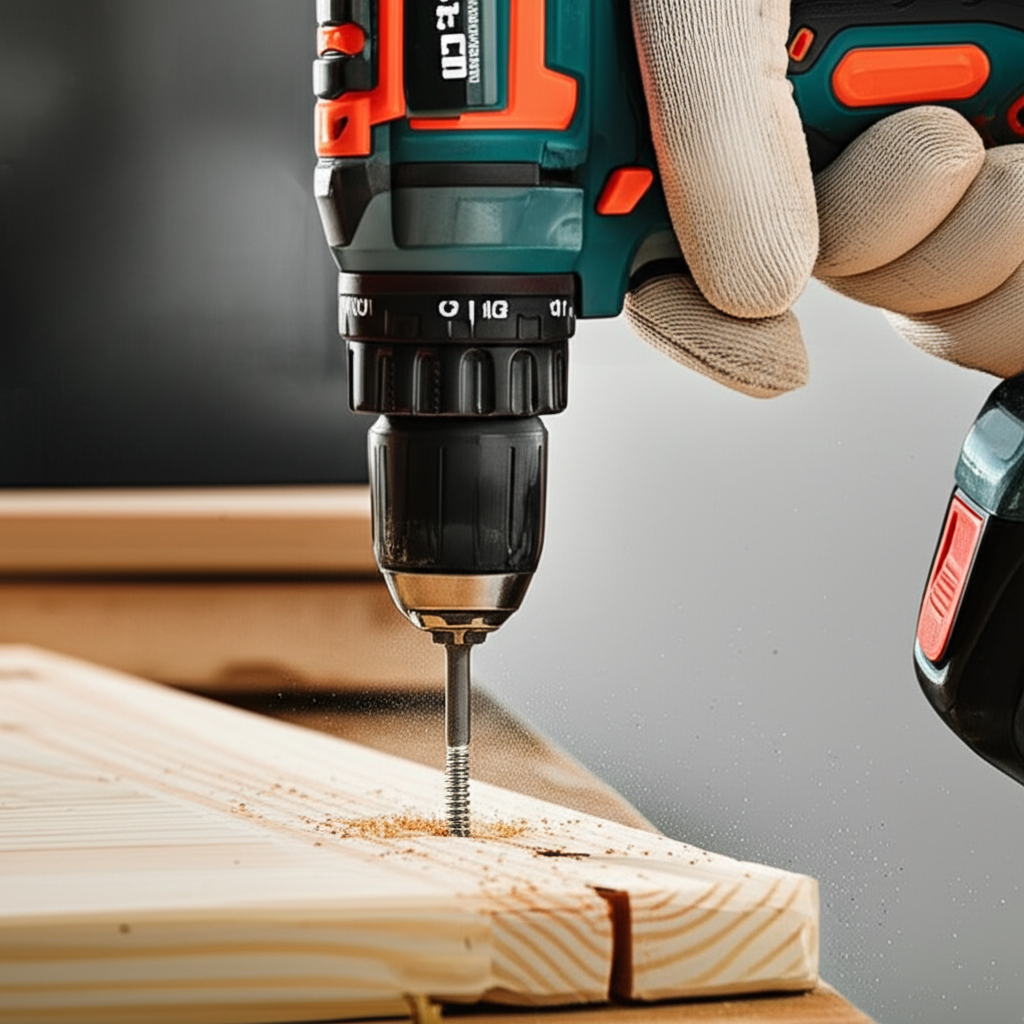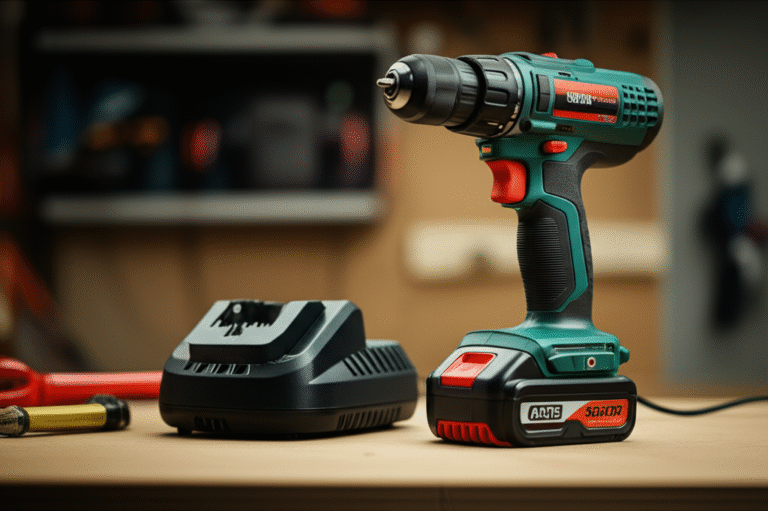Yes, you can generally leave a cordless drill battery on its charger. Modern chargers and batteries are designed with safety features to prevent overcharging and damage, making it safe for long-term storage. However, understanding best practices ensures maximum battery life and safety.
Ever wonder if leaving your cordless drill battery plugged in is a good idea? It’s a question many of us have when we’re finishing up a project and want to make sure our tools are ready for next time. You’ve probably heard conflicting advice, and it can be confusing. Will it ruin the battery? Is it a fire hazard? Don’t worry, we’ll clear this up with straightforward advice. We’ll cover what makes it safe, when you might want to unplug it, and how to keep your batteries in tip-top shape for years to come.
Understanding Your Cordless Drill Battery and Charger
Cordless tools have revolutionized DIY and professional work, offering freedom and convenience. At the heart of this is the rechargeable battery. These powerhouses, typically lithium-ion (Li-ion) or nickel-cadmium (NiCd) in older models, store energy to keep your drill spinning. The charger is designed to replenish this energy safely.
Modern battery technology has come a long way. Li-ion batteries, which are standard in most new cordless tools, have built-in battery management systems (BMS). This BMS is like a tiny computer within the battery pack that monitors voltage, temperature, and current. It plays a crucial role in safety and longevity.
Chargers for these batteries are also sophisticated. They don’t just dump power into the battery. Instead, they use a multi-stage charging process. This typically involves a rapid charge phase, followed by a trickle charge or a maintenance mode once the battery is full. This smart charging prevents the most common issues like overcharging, which was a concern with older battery technologies.
The Safety of Leaving Li-ion Batteries on the Charger
For lithium-ion batteries, which are the vast majority of cordless drill batteries today, leaving them on the charger is generally safe and often recommended for maintenance. Here’s why:
- Smart Charging Technology: As mentioned, Li-ion chargers and batteries communicate. Once the battery reaches 100% charge, the charger automatically switches to a very low-current maintenance mode or stops charging altogether. This prevents overcharging, which could overheat the battery or degrade its internal components.
- Battery Management Systems (BMS): The BMS inside the battery pack constantly monitors its health. If it detects any abnormal conditions, like overheating or excessive voltage, it will shut down the charging process or the battery itself to prevent damage or hazards.
- Reduced Self-Discharge: Li-ion batteries do lose charge over time, even when not in use (self-discharge). Keeping them on a smart charger in maintenance mode ensures they remain at an optimal charge level, ready for immediate use.
Reputable manufacturers like DeWalt, Makita, Milwaukee, and Bosch design their battery systems with this in mind. Their user manuals often state that it’s acceptable to leave batteries on the charger. For example, Bosch highlights their battery technology, emphasizing the safety and longevity features built into their systems.
When to Consider Unplugging Your Charger
While it’s generally safe, there are a few scenarios where you might want to unplug your battery from the charger:
- Extreme Temperatures: Batteries, especially Li-ion, are sensitive to temperature. Leaving a battery on a charger in a very hot garage or a freezing shed can degrade the battery over time, even if the charger itself has safety features. The ideal charging and storage temperature is typically between 40°F and 70°F (4°C and 21°C).
- Long-Term Storage (Months): If you won’t be using your drill for several months, it’s often best to store the battery at around a 40-50% charge level. Leaving it fully charged for extended periods can stress the battery. For long-term storage, unplug it and store it in a cool, dry place.
- Damaged Batteries or Chargers: If you notice any signs of damage to your battery (swelling, leaking, cracks) or your charger (frayed cord, unusual smells, overheating), unplug it immediately and discontinue use.
- Power Outages: While rare, a power surge or outage could potentially cause issues with charging electronics. If you live in an area with frequent power fluctuations, unplugging chargers during storms or when you’re away for extended periods might offer peace of mind.
Best Practices for Cordless Drill Battery Care
To maximize the lifespan and performance of your cordless drill batteries, follow these simple tips:
Charging Habits

- Charge as Needed: Li-ion batteries don’t have a “memory effect” like older NiCd batteries. You don’t need to wait for them to fully discharge before recharging. Charge them when it’s convenient.
- Avoid Deep Discharges: While Li-ion batteries can handle being discharged, repeatedly draining them completely can shorten their lifespan. It’s better to recharge when the battery indicator shows it’s getting low.
- Use the Correct Charger: Always use the charger specifically designed for your battery type and voltage. Using an incompatible charger can be dangerous and will damage the battery.
Storage and Handling
- Store in a Moderate Climate: Keep batteries and chargers in a cool, dry place, away from direct sunlight and extreme temperatures.
- Keep Terminals Clean: Ensure the battery terminals and the charger contacts are clean and free of debris. A soft, dry cloth is usually sufficient.
- Avoid Physical Damage: Dropping batteries or exposing them to impact can damage internal components, leading to reduced performance or safety issues.
Understanding Battery Lifespan
Even with the best care, batteries have a finite lifespan, measured in charge cycles. A charge cycle is one full discharge and recharge. Li-ion batteries typically last between 500 to 1000 charge cycles before their capacity significantly diminishes.
Here’s a look at how different factors can impact battery lifespan:
| Factor | Impact on Li-ion Battery Lifespan | Explanation |
|---|---|---|
| Charging Habits | Significant | Frequent deep discharges and overcharging (though rare with modern tech) can reduce cycles. |
| Temperature | High Impact | Extreme heat or cold during charging, use, or storage degrades battery chemistry faster. |
| Storage State | Moderate Impact | Storing at 100% for very long periods can stress the battery; 40-50% is ideal for extended storage. |
| Usage Intensity | Moderate Impact | Consistently running the tool at maximum load generates heat, which can affect longevity. |
Troubleshooting Common Battery Issues
Even with careful use, you might encounter minor issues. Here are a few common ones:
- Battery Not Charging: Ensure the battery is properly seated in the charger and the charger is plugged into a working outlet. Check for dirt on the terminals. If the problem persists, the battery or charger might be faulty.
- Reduced Runtime: This is a natural sign of aging. If a battery that used to last for hours now only lasts minutes, it’s likely reached the end of its usable life.
- Overheating: If the battery or charger feels excessively hot during use or charging, stop immediately. Allow it to cool down. Persistent overheating could indicate a problem.
For more in-depth troubleshooting, consult your tool manufacturer’s support resources. For instance, Milwaukee Tool offers specific troubleshooting guides for their battery and charger systems.
Are Older Battery Types Different?
Yes, older cordless tools often used Nickel-Cadmium (NiCd) or Nickel-Metal Hydride (NiMH) batteries. These have different characteristics and require different care:
- NiCd Batteries: These suffered from the “memory effect,” where if you repeatedly recharged them before they were fully discharged, they would “remember” that lower capacity and only provide that much power. To avoid this, NiCd batteries needed to be fully discharged periodically. Leaving them on a charger constantly was generally not recommended as it could lead to overcharging and damage.
- NiMH Batteries: These were an improvement over NiCd, offering higher capacity and a reduced memory effect. However, they were still more susceptible to damage from overcharging and extreme temperatures than modern Li-ion batteries.
If you’re still using tools with NiCd or NiMH batteries, it’s best to follow the specific charging recommendations for those types, which usually involve avoiding constant charging and performing occasional full discharge cycles.
The Environmental Aspect of Battery Disposal
When your cordless drill batteries eventually reach the end of their life, proper disposal is important. Lithium-ion batteries contain materials that can be harmful to the environment if not disposed of correctly. Many local recycling centers, electronics stores, and even some hardware stores have battery recycling programs.
Check with your local waste management authority or look for specialized battery recyclers. Companies like Call2Recycle offer drop-off locations across the country for rechargeable batteries. Call2Recycle provides a convenient way to find nearby recycling points.
Frequently Asked Questions (FAQ)
Can I leave my cordless drill battery on the charger overnight?
Yes, for modern lithium-ion batteries, leaving them on the charger overnight is generally safe. Smart chargers and battery management systems prevent overcharging.
Will leaving my battery on the charger damage it?
No, modern Li-ion chargers are designed to stop charging or switch to a maintenance mode once the battery is full, preventing damage from overcharging.
Is it safe to leave a cordless drill battery plugged in all the time?
For the most part, yes. However, avoid extreme temperatures and consider unplugging for very long periods of non-use (many months) to optimize long-term health.
What is the best way to store a cordless drill battery?
Store batteries in a cool, dry place, away from direct sunlight. For extended storage (months), aim for a charge level of 40-50%.
Should I wait for my battery to die before charging it?
No, with lithium-ion batteries, you don’t need to wait for them to fully discharge. Charge them whenever it’s convenient.
What should I do if my battery or charger gets very hot?
If either the battery or charger feels excessively hot, unplug it immediately and let it cool down in a safe, well-ventilated area. Persistent overheating may indicate a fault.
Conclusion
So, to wrap things up: can you leave your cordless drill battery on the charger? For the vast majority of users with modern lithium-ion tools, the answer is a resounding yes. The advanced technology built into both the batteries and their chargers takes the guesswork out of it, ensuring safety and convenience. You can confidently leave your battery plugged in, knowing it’s being managed to stay ready for your next project.
Just remember those key best practices: keep them out of extreme temperatures, use the right charger, and if you’re storing them for a long time, aim for that 40-50% charge level. By following these simple guidelines, you’ll not only keep your batteries safe but also extend their lifespan, ensuring your cordless drill remains a reliable workhorse for years to come. Happy building!
